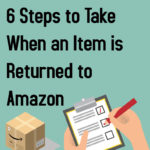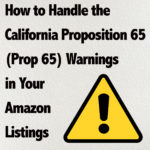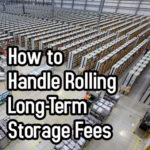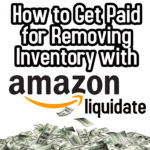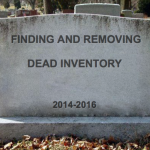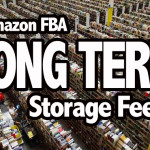One of the most annoying emails for FBA sellers to receive from Amazon starts with “Refund initiated for order #102-12345-67890.” Getting a return notification is not only annoying, but it can sometimes spark a few fearful questions. Is this return one of the high priced items I just sold? Is the buyer going to say that
How to Improve Your IPI Score for Amazon FBA
Stephen and I had the opportunity to talk with Amazon employees at the Seattle headquarters in mid-2019, and the IPI score was the number one topic I wanted to ask them about. There seems to be a lot of confusion and frustration among FBA sellers over the IPI score and its ramifications, and the Amazonians
How to Handle California Proposition 65 (Prop 65) Warning in Your Amazon Listings
Recently Amazon sent out an email to many Amazon sellers telling them they have inventory that does not have an updated California Proposition 65 (“Prop 65”) warning. In this blog post, I’ll share with you what Prop 65 is, how it impacts your Amazon business, how you can find which items are impacted by this
How to Handle Rolling Long-Term Storage Fees
Recently, Amazon made a very significant fee change… and most Amazon sellers are clueless how it will impact their Amazon business. But whether you are paying attention to this fee or not, there are things you can do right now to not only best handle this fee, but also find ways to avoid this fee
Seller Central Tip #6 – The Magic Words for Communicating with Seller Central
Nothing is more frustrating than trying to get your point across to a Seller Central representative and feeling like you are continually being misunderstood. In previous blog posts, we have covered ways to handle different glitches within the Amazon inventory system – some of which require opening a case and sending a written message to
How to Provide Box Level Details on Amazon FBA Shipments
If you’ve been reading your seller emails from Amazon, you know that starting November 1, 2016, FBA sellers will be required to provide box level details of the contents of their shipments to FBA warehouses. Failing to provide those details will incur a fee for your shipments of 15 cents per item. Additionally, Amazon has
Amazon’s Inventory Liquidation Program – How to Get Paid for Removing Inventory From Amazon
There are multiple situations where it’s in your best interest to remove some of your items from your Amazon FBA inventory. Here are just a few: To remove dead inventory that seems like it will never sell To avoid long term storage fees Because the item has become restricted and you can no longer sell it
How to Find and Remove “Dead Inventory”
With an Amazon FBA business, nobody likes to waste money on something that isn’t going to eventually make money. But we all do it. We all spend money on inventory that we think will bring back a return on our investment (ROI), only to have it sit in the FBA warehouse without a sale. And it
How to Find Out Exactly Which Items Will Be Charged Long Term Storage Fees
UPDATE: Amazon has recently updated their Inventory Age report, and this post is now outdated. What I teach below still works, but there is now a much easier way to find what you’re looking for. Click here see my latest training report on how to find out exactly which items will be charged a Long Term
Seller Central Tip #3 – How to Handle FBA Inbound Shipment Problems
Does this look familiar? Hello (AMAZON USER NAME), We discovered a problem while we were receiving your inbound shipment (SHIPMENT ID). We are taking the necessary steps to remedy the situation and receive your inventory. Please note that select problems may result in an unplanned service fee. The problem
